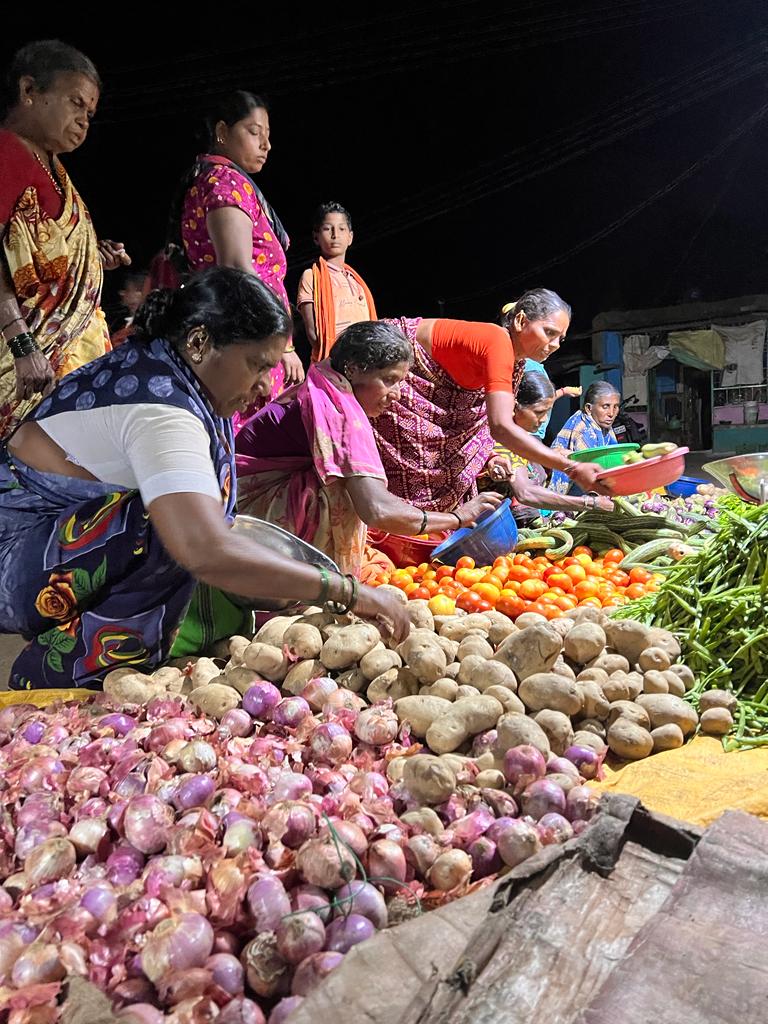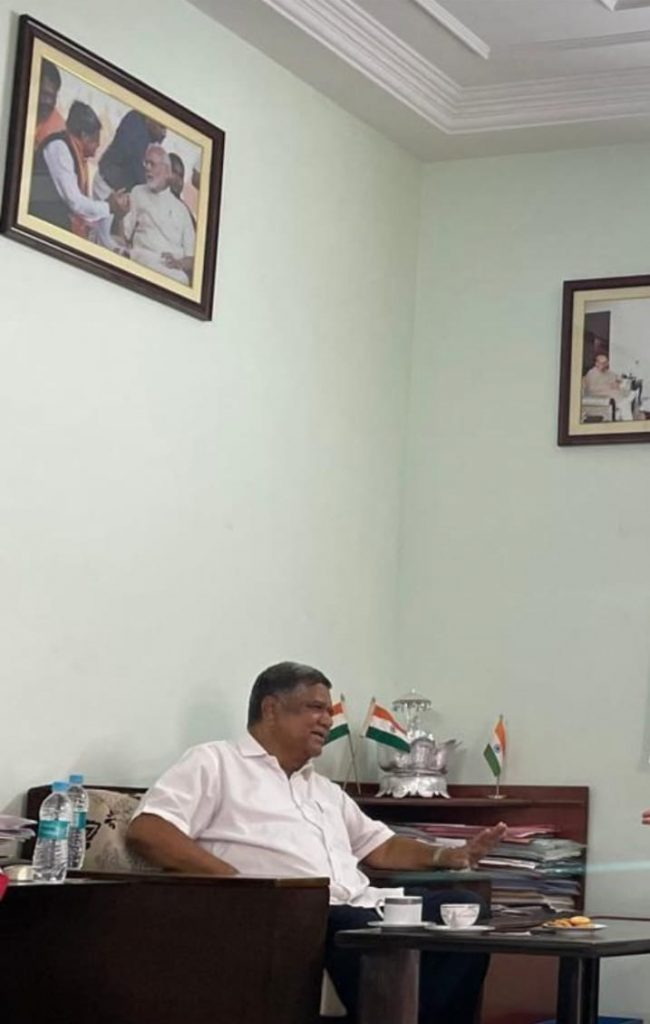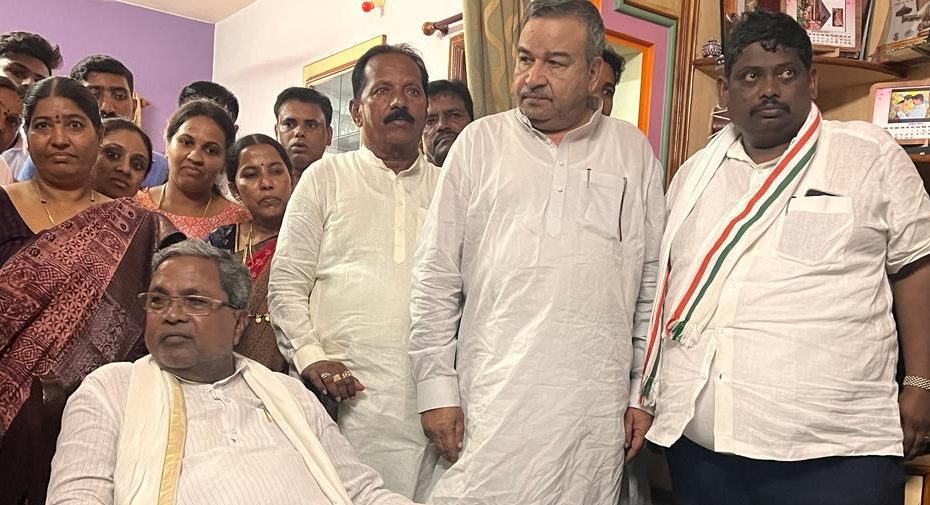As Karnataka enters the last phase of electioneering, the popular narrative is that the Congress is likely to trump the Bharatiya Janata Party in the assembly polls. Most pre-poll surveys indicate a clear lead for the Congress over the BJP, even as Prime Minister Narendra Modi unleashes his personal firepower in the final week of campaigning.
The BJP candidates have been waiting for Modi’s appearance like farmers look to the sky for rains in a drought year. C.T. Ravi, a former minister in the Karnataka cabinet and the BJP candidate from Chikmagalur assembly seat, candidly says Modi will bring an extra 1-2% vote swing in the BJP’s favour over the next seven days. “Modi’s presence will absorb some of the anger that may exist against our us,” says Ravi.
The BJP’s self goals in terms of its inability to stem the exodus of senior party leaders must surely work in the Congress’s favour.

There is little doubt that the momentum is with the Congress, which can often be seen in the somewhat weak body language of BJP leaders and workers who are just hoping that Modi will somehow work a miracle before campaigning ends on May 8. A senior BJP minister and a candidate in Bengaluru did not even disguise this sentiment when he said, “Modiji will come and turn voters in our favour in the coming week.” He clearly seemed to imply that without Modi’s intervention, things were not going all that well for the BJP.
This underlying theme played out consistently as one travelled from Bangalore to Hubbali via Mysore, Hasan, Chikmagalur and Shimoga.
Deepak Doddaiah, the BJP candidate from Mudigere constituency in Chikmagalur, said in no uncertain terms that Modi’s public meetings in the last leg of campaigning will make a difference. Even ordinary BJP workers seemed to echo this sentiment. It is almost as if they have all been reflexively programmed to say that Modi will come and rescue them. Most BJP leaders seemed acutely aware that the party is facing severe anti-incumbency, made worse by the perception of this being the most corrupt government in a long time. The term “40% sarkara” has caught on like a wild fire. The BJP cannot brush this under the carpet.
The question now, is how much difference will Modi make? Most pre-poll surveys show the Congress crossing 40% vote share (it had 38% in 2018) and touching the majority mark of 113 seats out of a total of 224 seats in the assembly.

However, the Congress may face some unexpected headwinds. The grand old party’s most popular leader. Siddaramaiah, told a group of visiting journalists that the party must get more than 120 seats to be safe. He admitted that anything less than 120 seats for the Congress could attract horse trading by the BJP and JD(S) combine. This fear is quite palpable among the Congress leaders, who admit they can’t match BJP’s money power in the event the Congress lead is somewhat slender.
Senior Congress leader D.K. Shivakumar said he was also worried about the voters’ list having undergone a change in many areas where an unusually large number of voters are missing. “We are keeping a close watch on this,” he said.
Chief minister Basavaraj Bommai put up a brave face and asserted that the BJP will get a majority and the pre-poll surveys would be proved wrong. Bommai admitted to us that the “Congress had succeeded in spreading the impression of corruption and misgovernance against us but our work in the rural areas will speak for itself.” Bommai specially talked of his government’s sustained programme to build roads and other village infrastructure in Scheduled Caste-dominated areas. “This will definitely bring us dividends,” Bommai said.
Asked about the likely damage caused by senior leader Jagadish Shettar’s exit from the BJP, Bommai brushed it aside, saying Shettar may not save his own seat in Hubli.
However, when we met Shettar at his home in Hubli, he seemed confident that he would not only win his own seat comfortably but also bring up to 5,000 votes away from BJP in over two dozen other constituencies dominated by the Lingayat community which has strong presence in many parts of Karnataka. Traditionally, 60% to 70% of the Lingayats voted for the BJP in Karnataka. But Shettar asserts this time a good chunk of Lingayats will move away from the BJP.
This claim is predictably pooh-poohed by Bommai, a Lingayat leader himself. The BJP is depending on its tallest Lingayat leader B.S. Yediurappa and Bommai to hold on to its traditional Lingayat vote base. However, Shettar’s humiliation by the BJP central leadership and his much publicised exit from the party will certainly do some damage, say most observers. How much of the BJP’s traditional Lingayat vote base splinters is a very critical factor in this election. It would decide whether the Congress is able to hit a comfortable majority of 120 seats plus.
The other important factor for the Congress will be whether the JD(S), which is controlled by former Prime Minister Deve Gowda’s family, will end up helping the BJP. “In many constituencies the JD(S) has fielded weak candidates against the BJP to hurt the Congress,” says Yathindra, the sitting MLA of Varuna constituency in old Mysore. This time Yathindra has vacated his seat for his father, Siddaramaiah. Varuna is a prestigious battle where the BJP and JD(S) will both try to defeat the Congress stalwart.
Senior Congress leader D.K. Shivakumar is also convinced that there is a hidden deal between the BJP and JD(S). He cites as evidence the fact that Modi generally refrains from criticising the JD(S), which is contesting in 200 seats.
If the JD(S) hurts the Congress more than it does the BJP, then the Congress tally even after an improved performance may fall short of a safe majority which is 120 seats out of 224. A three-way fight with hidden deals can result in complex outcomes, depending on which of the two dominant parties get hurt more by the less significant third player. In this sense, JD(S) remains the joker in the pack. Even recent electoral history shows JD(S) has just enough vote base to cause a hung assembly. Surveys suggest the voter this time might give a decisive mandate.
Even if the Congress is ahead of the BJP in most pre-poll surveys, it faces one disadvantage. Its votes are spread more thinly across the state than that of BJP’s. Congress got merely 80 seats in 2018, though its vote share at 38% was more than that of BJP’s 36%. With two percentage points less votes, the BJP emerged as a single largest party with 104 seats because its votes were more concentrated in certain regions. So even if the Congress vote percentage this time crosses 40% and is ahead of BJP by four to five percentage points, one is not sure whether it would convert to a safe majority of 120 to 130 seats so that chances of horse trading become remote. These are some of the imponderables the Congress must face in the Karnataka polls.
Overall, a simple majority of 120 plus will help the Congress and the opposition at large create a broader sentiment that the BJP under Modi can be challenged politically and electorally. So the long-term implications of the Karnataka elections go well beyond the state itself.
(This article was published in The Wire)
Also Read: Gold Prices Achieve A Record High











